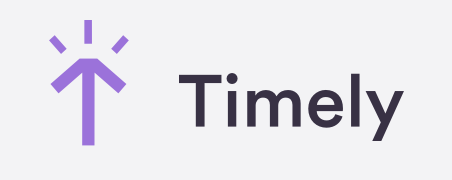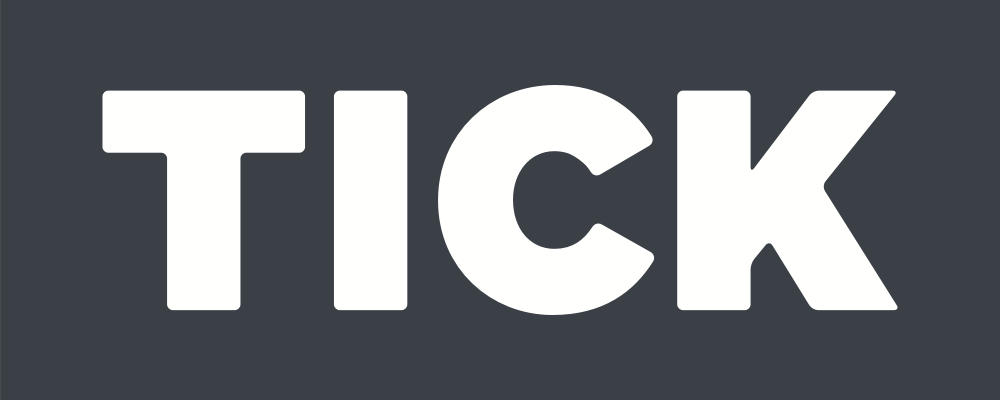The Quiet Protocol: Boosting Workplace Productivity by 65%
Unlock the potential of the Quiet Protocol in your remote teams. This article dives into Leslie Perlow's innovative approach, Discover how applying these methods with activity tracking software like Insightful can lead to a dramatic 65% boost in workplace productivity and focused efficiency.
Key Takeaways:
- The article introduces time famine and time confetti, describing how frequent interruptions lead to fragmented work time and a feeling of never having enough time to complete tasks.
- Originating from Leslie Perlow's research, the Quiet Protocol sets specific times for uninterrupted work, significantly enhancing productivity by alleviating time confetti and famine.
- The article details the implementation of the Quiet Protocol, focusing on strategic planning, communication, workflow adjustments, and monitoring for organizational success, while also offering individual strategies such as task prioritization, minimizing distractions, and respecting focused work periods.
- Insightful's Role in Supporting the Protocol: The use of Insightful's productivity monitoring software is highlighted as beneficial for implementing and maintaining the Quiet Protocol, offering tools for planning, monitoring, and gaining productivity insights.
Read time: 7 minutes
The Quiet Protocol, conceptualized by Leslie Perlow of Harvard Business School, represents a strategic response to the challenges of 'time famine' and 'time confetti' in the workplace. This innovative approach was developed from Perlow's detailed research in the late 1990s, where she observed a team of engineers at the University of Michigan struggling to cope with incessant interruptions.
What is “time famine”?
Time famine refers to the stress-inducing situation where individuals have more tasks than time available to complete them. This concept, central to Leslie Perlow's research, highlights the common workplace issue of feeling constantly overwhelmed by an unmanageable workload. Time famine leads to a cycle of rushing and inefficiency, impacting work quality and contributing to employee stress.
What is “time confetti”?
Time confetti refers to the fragmentation of one's workday into smaller, less productive segments due to frequent interruptions and distractions.
This term, integral to Leslie Perlow's research, describes how continuous disruptions scatter an individual's attention across various tasks, reducing the overall effectiveness and efficiency of their work. The concept of time confetti highlights the challenge of achieving sustained focus in a typical work environment, where constant demands and notifications can fragment what could otherwise be productive, continuous blocks of time.
Time confetti exacerbates the sensation of time famine. The frequent interruptions that cause time to be broken up into smaller "confetti" pieces make it harder for individuals to complete tasks efficiently. As a result, they often experience a sense of running out of time or being unable to accomplish their workload within the available hours, hence the feeling of time famine.
Both concepts highlight the challenges of managing time and focus in a busy work environment. To combat these challenges, Perlow formulated the Quiet Protocol, which entails designating specific, uninterrupted times during the workweek dedicated solely to focused work.
The Solution? The Quiet Protocol.
The Quiet Protocol aims to alleviate time famine by creating uninterrupted periods for focused work, helping employees manage their tasks more effectively within the available time.
This protocol is not just about creating silent spaces; it's an organized method to allow employees to immerse themselves deeply in their most critical tasks without the hindrance of frequent interruptions, be it through emails, impromptu meetings, or casual office drop-ins.
The Quiet Protocol's implementation aimed to transform these fragmented work periods into cohesive, productive blocks, thereby alleviating the stress of time famine and mitigating the effects of time confetti. This strategic scheduling of quiet times marked a significant innovation in enhancing workplace productivity and managing time more effectively.
The results of Leslie Perlow's study, which showcased the effectiveness of the Quiet Protocol, were remarkably positive and compelling.
Upon implementing this strategy with the team of engineers she observed at the University of Michigan, Perlow noted a significant increase in productivity. The most striking outcome was a 65% boost in productivity levels among the engineers during the periods designated for focused, uninterrupted work.
This substantial improvement can be attributed to the reduction in time confetti and the mitigation of time famine. The engineers, who previously faced constant interruptions that fragmented their workday, now had dedicated time blocks to concentrate on complex tasks without distraction.
This not only allowed for deeper focus and better quality of work but also enhanced overall job satisfaction. The study's results highlighted the profound impact that structured, distraction-free work periods can have on productivity, validating the Quiet Protocol as an effective solution for improving efficiency in the workplace.
Implementing the Quiet Protocol on an Organizational or Team Level
Implementing the Quiet Protocol within a team requires a thoughtful and systematic approach from management. The first step is to develop a clear plan that specifies which days or times will be dedicated to uninterrupted work. This schedule should be thoughtfully crafted, taking into account the team's workload, deadlines, and the individual working styles of team members.
Once the schedule is set, effective communication becomes key. Managers need to clearly convey the purpose and benefits of the Quiet Protocol to the entire team. This involves explaining how this strategy aims to mitigate time famine and time confetti, ultimately enhancing focus and productivity. If necessary, training sessions or informational meetings can be arranged to help team members adapt to this new work pattern.
The next crucial step involves integrating the Quiet Protocol into the existing workflow. This means adjusting schedules to ensure that meetings and collaborative tasks do not overlap with the designated quiet periods. Deadlines and project timelines should also be aligned with the new schedule to facilitate smooth implementation.
Technology plays a vital role in enforcing the Quiet Protocol. Managers can utilize project management tools and platforms like Insightful to monitor adherence and track productivity gains. Digital tools can also be adjusted to minimize interruptions during quiet times, such as disabling notifications for group chats or emails.
Leadership by example is another critical aspect of successful implementation. Managers should themselves adhere strictly to the Quiet Protocol, refraining from scheduling meetings or sending non-urgent communications during these times. This commitment should also be echoed by team leaders and senior staff, reinforcing the importance of these periods of focused work.
Regular monitoring and enforcement are essential to maintain the effectiveness of the Quiet Protocol. Managers should observe how the protocol is being followed and gather feedback from team members to gauge its impact. Consistent enforcement across the team is necessary to uphold the protocol's integrity and effectiveness.
Finally, an ongoing process of feedback and continuous improvement should be established. Managers should regularly seek out and review team feedback regarding the Quiet Protocol's effectiveness and address any challenges that are identified. Based on this feedback, adjustments to the schedule or approach might be necessary, ensuring that the Quiet Protocol remains a dynamic and responsive solution to enhancing workplace productivity.
Implementing the Quiet Protocol on an Individual Level
Maintaining the Quiet Protocol on an individual level involves several personal strategies and practices. Individuals can uphold this protocol by:
- Planning and Prioritizing Tasks: Each individual should plan their workday around the Quiet Protocol periods. This involves identifying tasks that require deep focus and scheduling them during these uninterrupted times. Prioritizing tasks ensures that the most important or challenging work gets attention during periods of minimal distraction.
- Minimizing Personal Distractions: During quiet periods, it's crucial for individuals to proactively minimize their own sources of distraction. This can include turning off notifications on phones and email, closing unnecessary browser tabs, and using tools or apps that limit access to distracting websites.
- Creating a Conducive Work Environment: Setting up a workspace that supports focused work can significantly help. This might mean using noise-cancelling headphones, organizing the desk to reduce clutter, or putting up a ‘Do Not Disturb’ sign if in a shared space.
- Communicating Availability: Individuals should inform their colleagues, clients, and other stakeholders about their Quiet Protocol periods. Setting expectations about availability and response times during these periods can help minimize work-related interruptions.
- Self-Monitoring and Reflection: Individuals should self-monitor their adherence to the Quiet Protocol and reflect on its effectiveness. This could involve tracking productivity levels during quiet times and comparing them to other periods, or simply assessing how they feel about their work and stress levels.
- Respecting Others’ Quiet Time: Just as individuals expect their quiet time to be respected, they should also respect the quiet times of their colleagues. This mutual respect helps in creating a supportive environment where everyone can benefit from focused work periods.
Integrating these habits into their everyday schedule can successfully uphold the Quiet Protocol, resulting in enhanced efficiency, improved work quality, and decreased levels of time constraints and stress.
Leveraging Insightful to Enhance Quiet Protocol Implementation
Insightful's employee productivity monitoring can play a crucial role in implementing and maintaining the Quiet Protocol in organizations.
This software provides a suite of tools that can assist both management and employees in adhering to the principles of the Quiet Protocol, ultimately boosting productivity and minimizing disruptions.
- Scheduling and Planning: Insightful can help managers identify the most productive hours for their teams, allowing for the effective scheduling of Quiet Protocol periods. By analyzing data on when employees are most active, managers can strategically plan uninterrupted work times that align with peak productivity periods.
- Monitoring Compliance: The computer tracking software allows managers to monitor real-time activity and ensure that the Quiet Protocol is being followed. Managers can check if employees are engaged in work-related tasks during these periods and not being distracted by unrelated activities or digital interruptions.
- Reducing Digital Distractions: Insightful’s ability to categorize websites and applications as productive or unproductive can help employees stay focused on relevant tasks. By identifying and limiting access to distracting websites during Quiet Protocol periods, the software supports a more focused work environment.
- Data-Driven Adjustments: The comprehensive reports generated by Insightful provide valuable insights into the effectiveness of the Quiet Protocol. Managers can use this data to make informed decisions about adjusting the duration and frequency of quiet periods or addressing specific challenges faced by the team.
- Personal Productivity Insights: On an individual level, employees can use Insightful to self-monitor their productivity. The software provides feedback on how they spend their time, encouraging self-reflection and better personal time management, particularly during designated quiet times.
Insightful effectively solves the issue of how to monitor remote work. Insightful's remote work time tracker, when integrated with the Quiet Protocol, can help organizations improve their time and productivity management methods. The software's real-time data and insights can assist in creating a disciplined and focused work environment, which is in line with the goals of the Quiet Protocol.
.svg)
.jpg)






























%20(1).png)
.png)



%20(6).png)